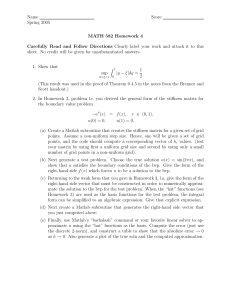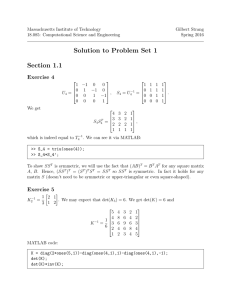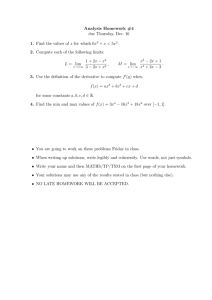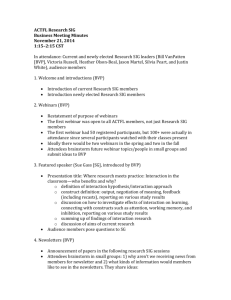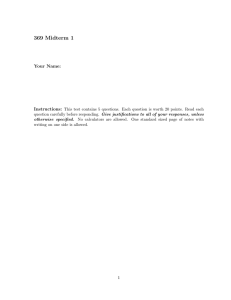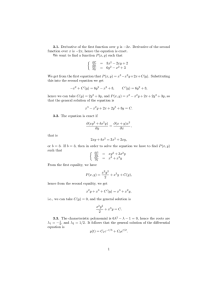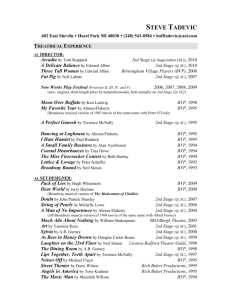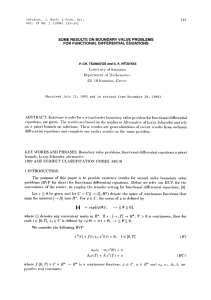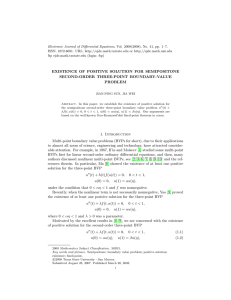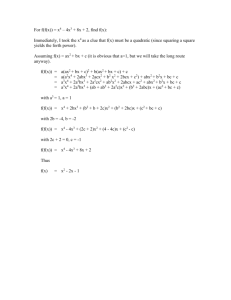MATH 517: Homework 1 Spring 2016
advertisement
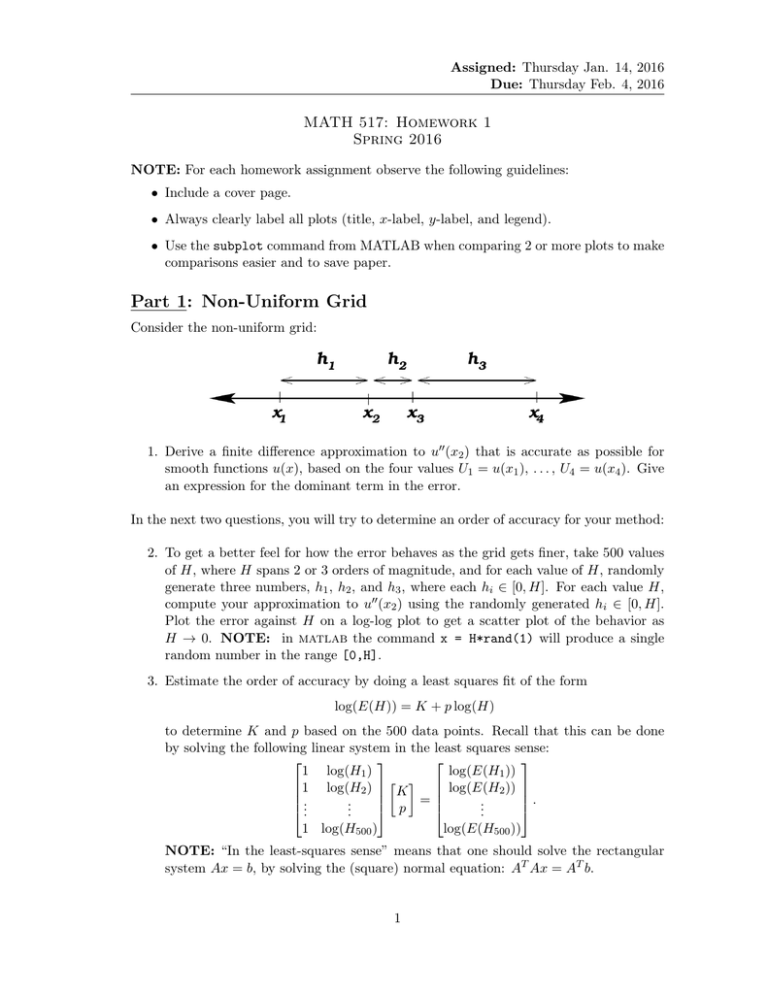
Assigned: Thursday Jan. 14, 2016 Due: Thursday Feb. 4, 2016 MATH 517: Homework 1 Spring 2016 NOTE: For each homework assignment observe the following guidelines: • Include a cover page. • Always clearly label all plots (title, x-label, y-label, and legend). • Use the subplot command from MATLAB when comparing 2 or more plots to make comparisons easier and to save paper. Part 1: Non-Uniform Grid Consider the non-uniform grid: 1. Derive a finite difference approximation to u00 (x2 ) that is accurate as possible for smooth functions u(x), based on the four values U1 = u(x1 ), . . . , U4 = u(x4 ). Give an expression for the dominant term in the error. In the next two questions, you will try to determine an order of accuracy for your method: 2. To get a better feel for how the error behaves as the grid gets finer, take 500 values of H, where H spans 2 or 3 orders of magnitude, and for each value of H, randomly generate three numbers, h1 , h2 , and h3 , where each hi ∈ [0, H]. For each value H, compute your approximation to u00 (x2 ) using the randomly generated hi ∈ [0, H]. Plot the error against H on a log-log plot to get a scatter plot of the behavior as H → 0. NOTE: in matlab the command x = H*rand(1) will produce a single random number in the range [0,H]. 3. Estimate the order of accuracy by doing a least squares fit of the form log(E(H)) = K + p log(H) to determine K and p based on the 500 data points. Recall that this can be done by solving the following linear system in the least squares sense: 1 log(H1 ) log(E(H1 )) 1 log(H2 ) log(E(H2 )) K = . .. .. .. p . . . log(E(H500 )) 1 log(H500 ) NOTE: “In the least-squares sense” means that one should solve the rectangular system Ax = b, by solving the (square) normal equation: AT Ax = AT b. 1 Assigned: Thursday Jan. 14, 2016 Due: Thursday Feb. 4, 2016 Part 2: Mixed Conditions Consider the following 2-point BVP: u00 + u = f (x), on 0 0 ≤ x ≤ 10 0 u (0) − u(0) = 0, u (10) + u(10) = 0. 4. Construct a second-order accurate finite-difference method for this BVP. Write your method as a linear system of the form A~u = f~. 5. Construct the exact solution to this BVP with f (x) = −ex . 6. Verify that your method is second order accurate by solving the BVP with f (x) = −ex at four different grid spacings h. HINT 1: Use the spdiags command in matlab to create the sparse matrix A – this will save storage and allow matlab to use a fast solver. Modify the following commands, which generate a tri-diagonal matrix with a [1,-2,1] structure, to model your specific BVP: e = ones(n,1); A = spdiags([e -2*e e], -1:1, n, n); HINT 2: Use the command u = A\f to invert your system – this will use a fast solver if you created your matrix with spdiags. Part 3: Periodic Boundary Conditions Consider the following 2-point BVP: −u00 + u = f (x), 0 on 0 u(0) = u(1) u (0) = u (1) 0≤x≤1 (these are periodic BCs). 7. Construct a fourth-order accurate finite-difference method for this BVP based on the fourth-order central finite difference. Write your method as a linear system of the form A~u = f~. 8. Construct the exact solution to this BVP with f (x) = sin(4πx). 9. Verify that your method is fourth-order accurate by solving the BVP with f (x) = sin(4πx) at four different grid spacings h. 10. Prove that your method is consistent with truncation error k~τ k = O(h4 ) and L2 stable, thereby proving that your method converges at O(h4 ) in the L2 -norm. HINT: what is the smallest eigenvalue of the discrete version of −u00 ? How does + u modify this? 2
